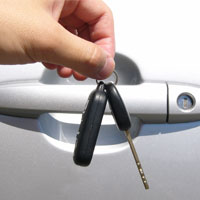Car Insurance in Indianapolis – 10 Discounts to Better Rates

Are you overwhelmed by the number of car insurance companies in Indianapolis? You’re not the only one! There are so many choices that it can easily become a real hassle to find the cheapest price on Indianapolis auto insurance.
If you have insurance now or need new coverage, you can use these tips to find the best rates and still get good coverage. This article will let you in on how car insurance quotes work and some tips to save money. Indiana drivers only need to know the best way to compare prices on the web.
Comprehensive Indianapolis Car Insurance Comparison
Lowering your car insurance rates is actually quite simple. You just have to spend a few minutes to compare rate quotes online with multiple companies. This can be accomplished using a couple different methods.
The first (and easiest) way to find the lowest comparison rates is to use a rate comparison form like this one (opens in new window). This type of form saves time by eliminating boring form submissions to each individual car insurance company. One form submission will return quotes from many national carriers. Recommended for those who want to invest the least amount of time.
A different way to compare prices requires a visit to the website for each individual company and fill out their own quote form. For sake of this example, we’ll pretend you want to compare rates from Allstate, GEICO and Liberty Mutual. To get rate quotes you would need to take the time to go to each site and enter your policy data, and that’s why the first method is more popular.
For a list of links to companies insuring cars in Indianapolis, click here.
It’s up to you how you get prices quotes, just ensure you’re using the exact same coverage limits for each price quote. If you enter differing limits it will be very difficult to make a fair comparison in Indianapolis.
Don’t overlook these ten discounts
Companies offering auto insurance do not list every available discount in a way that’s easy to find, so we break down some of the best known and the more hidden savings tricks you should be using. If you aren’t receiving every discount you qualify for, you’re just leaving money on the table.
- Clubs and Organizations – Being a member of certain professional organizations is a good way to get lower rates on car insurance.
- Own a Home – Owning a house in Indianapolis can help you save on car insurance because owning a home requires personal responsibility.
- Low Mileage Discounts – Low mileage vehicles can qualify you for better rates on cars that stay parked.
- New Car Discount – Adding a new car to your policy can be considerably cheaper because new vehicles have to meet stringent safety requirements.
- Safe Driver Discount – Drivers who avoid accidents may save up to 50% more than less cautious drivers.
- Multiple Cars – Insuring all your vehicles on one policy can get a discount on all vehicles.
- Seat Belt Usage – Drivers who require all occupants to wear their seat belts can save up to 15% on the medical payments or PIP coverage costs.
- Lower Rates for Military – Having a family member in the military could mean lower rates.
- Distant Student – Kids in college living away from home attending college and do not have a car can receive lower rates.
- Employee of Federal Government – Employees or retirees of the government can earn a discount up to 10% with certain companies.
It’s important to understand that most discount credits are not given to the entire policy premium. The majority will only reduce specific coverage prices like medical payments or collision. So when it seems like you can get free auto insurance, companies don’t profit that way.
To choose companies offering car insurance discounts in Indianapolis, follow this link.
Even more information is available at the Indiana Department of Insurance website. Indiana consumers can file complaints about a company, file complaints about an insurance agent or broker, and find out which companies have the most complaints.
Parts of your car insurance policy
Learning about specific coverages of your car insurance policy aids in choosing which coverages you need and the correct deductibles and limits. Policy terminology can be confusing and coverage can change by endorsement.
Insurance for medical payments
Coverage for medical payments and/or PIP pay for bills like surgery, hospital visits, prosthetic devices and EMT expenses. They are often utilized in addition to your health insurance policy or if you do not have health coverage. They cover not only the driver but also the vehicle occupants in addition to getting struck while a pedestrian. Personal Injury Protection is only offered in select states and gives slightly broader coverage than med pay
Uninsured Motorist or Underinsured Motorist insurance
This coverage gives you protection from other drivers when they either have no liability insurance or not enough. This coverage pays for injuries to you and your family and also any damage incurred to your vehicle.
Since a lot of drivers only purchase the least amount of liability that is required (Indiana limits are 25/50/10), their liability coverage can quickly be exhausted. That’s why carrying high Uninsured/Underinsured Motorist coverage is very important.
Collision coverage
This coverage covers damage to your vehicle resulting from a collision with an object or car. A deductible applies and the rest of the damage will be paid by collision coverage.
Collision insurance covers things such as driving through your garage door, sideswiping another vehicle, crashing into a ditch, hitting a mailbox and scraping a guard rail. This coverage can be expensive, so consider removing coverage from lower value vehicles. You can also increase the deductible to save money on collision insurance.
Liability
This coverage protects you from damages or injuries you inflict on other people or property by causing an accident. This coverage protects you from legal claims by others, and does not provide coverage for your injuries or vehicle damage.
Split limit liability has three limits of coverage: bodily injury for each person, bodily injury for the entire accident, and a limit for property damage. As an example, you may have values of 25/50/25 that translate to a $25,000 limit per person for injuries, $50,000 for the entire accident, and $25,000 of coverage for damaged propery.
Liability coverage pays for things such as structural damage, funeral expenses, emergency aid and repair costs for stationary objects. How much liability should you purchase? That is your choice, but it’s cheap coverage so purchase higher limits if possible. Indiana state minimum liability requirements are 25,000/50,000/10,000 but drivers should carry higher limits.
Comprehensive coverage (or Other than Collision)
This coverage covers damage OTHER than collision with another vehicle or object. You need to pay your deductible first then your comprehensive coverage will pay.
Comprehensive coverage protects against claims like rock chips in glass, damage from a tornado or hurricane and theft. The highest amount a car insurance company will pay at claim time is the market value of your vehicle, so if the vehicle’s value is low consider removing comprehensive coverage.
Final thoughts
In this article, we presented a lot of information how to compare car insurance prices online. The most important thing to understand is the more times you quote, the better your chances of lowering your rates. You may even discover the best prices are with an unexpected company.
People change insurance companies for a number of reasons such as high rates after DUI convictions, lack of trust in their agent, extreme rates for teen drivers and even delays in paying claims. Whatever your reason, switching car insurance companies can be easier than you think.
When buying insurance coverage, do not reduce needed coverages to save money. Too many times, an insured dropped uninsured motorist or liability limits and learned later that it was a big error on their part. The proper strategy is to buy a smart amount of coverage at an affordable rate while still protecting your assets.

